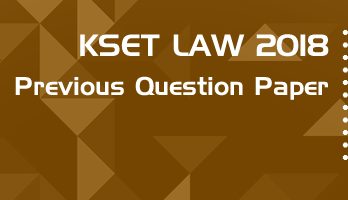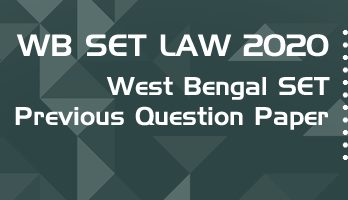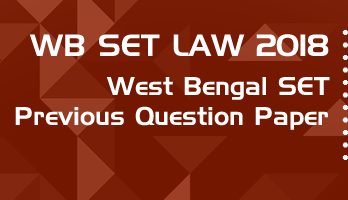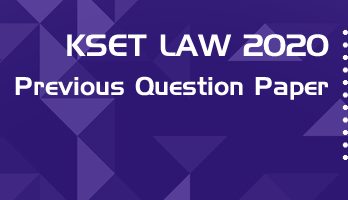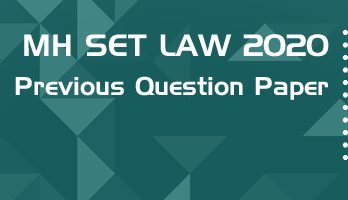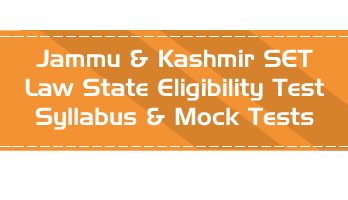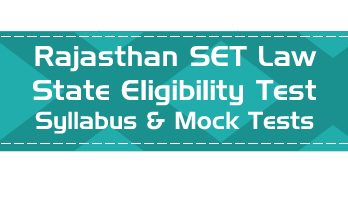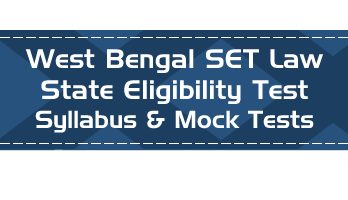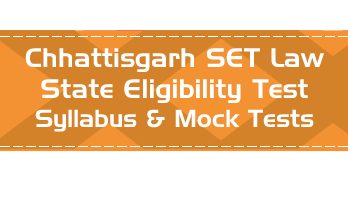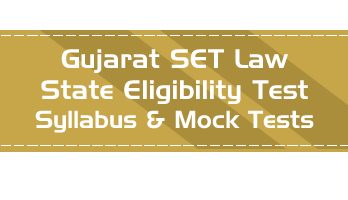- Based on latest Telangana State Eligibility Test Law Paper II Syllabus
- Law Subjects Overview Material covering important topics and concepts - 650 page PDF Book
- 50 Full Length Mock Tests - New Pattern Paper II, with 100 questions each
- 50 Mini Practice Mock tests - with 25 questions each
- Unlimited Practice - New Questions in every mock test with every attempt
- Answer choices of all questions shuffled randomly for better practice
- Database of over 9500 MCQs covering the entire syllabus
- Includes new comprehension based questions
- Questions & Answer Choices randomly shuffled in every attempt for better practice
- Accessible 24 x 7 via Smart-Phone browsers and Desktops
"Just wanted to let you know that I have cleared JRF with 99.99th percentile. Thank you for all your help and support that made it possible. " - Kanchan Yadav
"Thank you so much for the UGC NET test series. I finally qualified the exam. It was possible because of the mock test series provided by your team." - Robin Jaiswal
This previous question paper is Law Paper II from the TS SET law 2013 – Telangana State Eligibility Test that was conducted in 2013.
The pattern of the TS SET Law has been changed from 2018 onward, where the previous paper III has been removed and the scope of Paper II has been increased from 50 questions to 100 questions. Which means that the current paper II will have questions from the complete official syllabus.
Note : The syllabus for the UGC NET papers 1 & 2 has been changed since Jan 2019; so the syllabus for this exam is also expect to change.
The questions from this paper are included in the database for the TS SET Law Online Mock tests, Sample papers and MCQ Practice pack.
Check out the latest official syllabus and details of the TS SET Law in this article : TS SET Law Syllabus and Details.
TS SET Law Previous Question Paper II 2013
1. Which one of the following is the correct order of the objectives enshrined in the Preamble ?
(A) Liberty of thought, belief, expression, faith and worship
(B) Liberty of thought, expression, belief, faith and worship
(C) Liberty of expression, belief, thought, worship and faith
(D) Liberty of belief, thought, expression, faith and worship
2. Which one of the following is not a State under Art. 12 of the Indian Constitution ?
(A) University of Madras
(B) Oil and Natural Gas Commission
(C) State Bank of India
(D) BCCI
3. In which of the following cases the Apex Court observed that the reservation for Backward Classes may be made even outside the scope of Art. 16 (4).
(A) State of Kerala V. N.M. Thomas
(B) Balaji V. State of Mysore
(C) Narasimha Rao V. State of A.P.
(D) Devadasan V. Union of India
4. Match the following and select the correct answer from the code
List – I
I. Right to Education
II. Right to Medical Assistance
III. Right to Shelter
IV. Right against Torture
List – II
1. Chameli Singh V. State of U.P.
2. D.K. Basu V. State of West Bengal
3. Unni Krishnan V. State of A.P.
4. Paramananda Katara V. Union of India
Code : I II III IV
(A) 3 1 4 2
(B) 4 2 3 1
(C) 3 4 1 2
(D) 2 3 1 4
5. Directive Principles of State policy are
(A) Negative Injunctions of the State
(B) Positive Commands
(C) Moral Precepts of the State
(D) All the above
6. Which one of the following is not a correct statement relating to ordinance making power of the President ?
(A) President alone can promulgate ordinance
(B) Ordinance is an executive action
(C) President can issue ordinance when both the Houses are not in session
(D) Ordinance can be challenged for non-application of mind
7. Which one of the following statements refer to epistolary jurisdiction of the Supreme Court of India ?
(A) Original jurisdiction under Art. 141
(B) Taking cognizance of public interest litigation matters through letters addressed to the Court
(C) Enforcement of decrees of Supreme Court under Art. 142
(D) Advisory opinion of the Supreme Court under Art. 143
8. The nature of Law administered in the Courts maintained by the military authorities
(A) Local Law
(B) Prize Law
(C) Martial Law
(D) Conventional Law
9. The President of India has power to declare emergency under Art. 352 on which of the following grounds ?
I. War
II. Internal disturbance
III. External aggression
IV. Armed rebellion
Code :
(A) I, III and IV
(B) I, II and III
(C) I, II and IV
(D) II, III and IV
10. The Constitution (Ninety-seventh) Amendment Act, 2011 relates to
(A) Change of ‘Oriya’ into ‘Odia’
(B) ‘Chattisgarh’ and ‘Jharkhand’ for ‘Bihar’
(C) Co-operative Societies
(D) Service Tax
11. Which one of the following sets does not represent tests of authority of custom ?
(A) Continuance, peaceable enjoyment
(B) Antiquity, obligatory force
(C) Certainty, reasonableness
(D) Codification, moral
12. The Supreme Court of India in A.K. Gopalan case decided that the expression procedure established by law in Art. 21 of the Constitution means any procedure prescribed by law irrespective of its reasonableness or otherwise. This decision belongs to the school of
(A) Positivist approach
(B) Naturalist approach
(C) Sociological approach
(D) Philosophical approach
13. Dharma implies
(A) Law
(B) Justice
(C) Both law and justice
(D) None of the above
14. Roscoe Pound propounded the theory of ‘Social engineering’ which means
(A) Greatest happiness to greatest number of people
(B) Balancing of competing interests in the society
(C) Changes in the concepts and the function of the State
(D) Law has its source in the general consciousness
15. Which one of the following theories is based on the principle that punishment should be of such a nature so as to prove deterrent not only for the wrongdoer but also for the society ?
(A) Preventive theory
(B) Reformative theory
(C) Retributive theory
(D) Deterrent theory
16. Identify the INCORRECT proposition
(A) Animus and corpus are necessary for possession
(B) Physical control is essential for ownership
(C) Possession is lost if animus and corpus are lost
(D) Possession is the prima facie evidence of ownership
17. Who is the exponent of the theory of monism ?
(A) Kelson
(B) Austin
(C) Holland
(D) Hugo Groticis
18. Which of the following theories applicable to recognition ?
(A) Dualism theory
(B) Declaratory theory
(C) Clean slate theory
(D) Functional necessity theory
19. Which of the following countries is NOT a permanent member of Security Council ?
(A) USA
(B) France
(C) Japan
(D) UK
20. ECOSOC consists of how many members ?
(A) 15
(B) 54
(C) 20
(D) All members of UNO
21. Total number of Articles in Universal Declaration of Human Rights, 1948
(A) 20
(B) 18
(C) 25
(D) 30
22. Arrange the sources of Hindu law in chronological order
(I) Smriti
(II) Custom
(III) Digests and commentaries
(IV) Sruti
Code :
(A) (I) (IV) (II) (III)
(B) (IV) (I) (III) (II)
(C) (I) (II) (III) (IV)
(D) (IV) (III) (I) (II)
23. Who is a Hindu ?
(A) One who is born to Hindu father and Hindu mother
(B) One who is born to Hindu father and Sikh mother
(C) One who is born to Hindu mother and Muslim father but is brought up like Hindu
(D) All the above
24. Bride’s age is 10 yrs. Bridegroom’s age is 12 yrs. Their marriage is
(A) Void
(B) Voidable
(C) Valid
(D) Invalid
25. Dastane Vs Dastane case deals with which ground of divorce ?
(A) Desertion
(B) Cruelty
(C) Adultery
(D) Conversion


